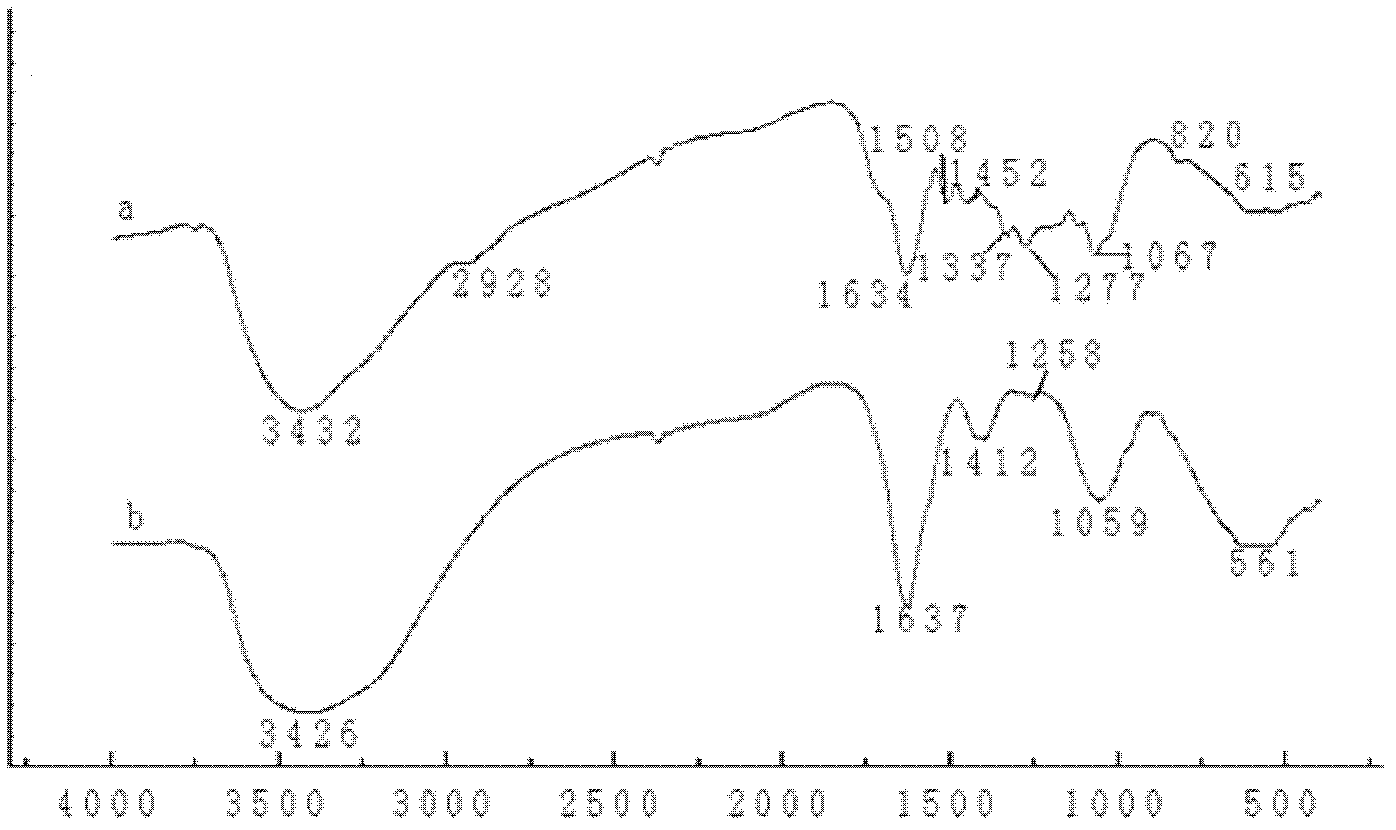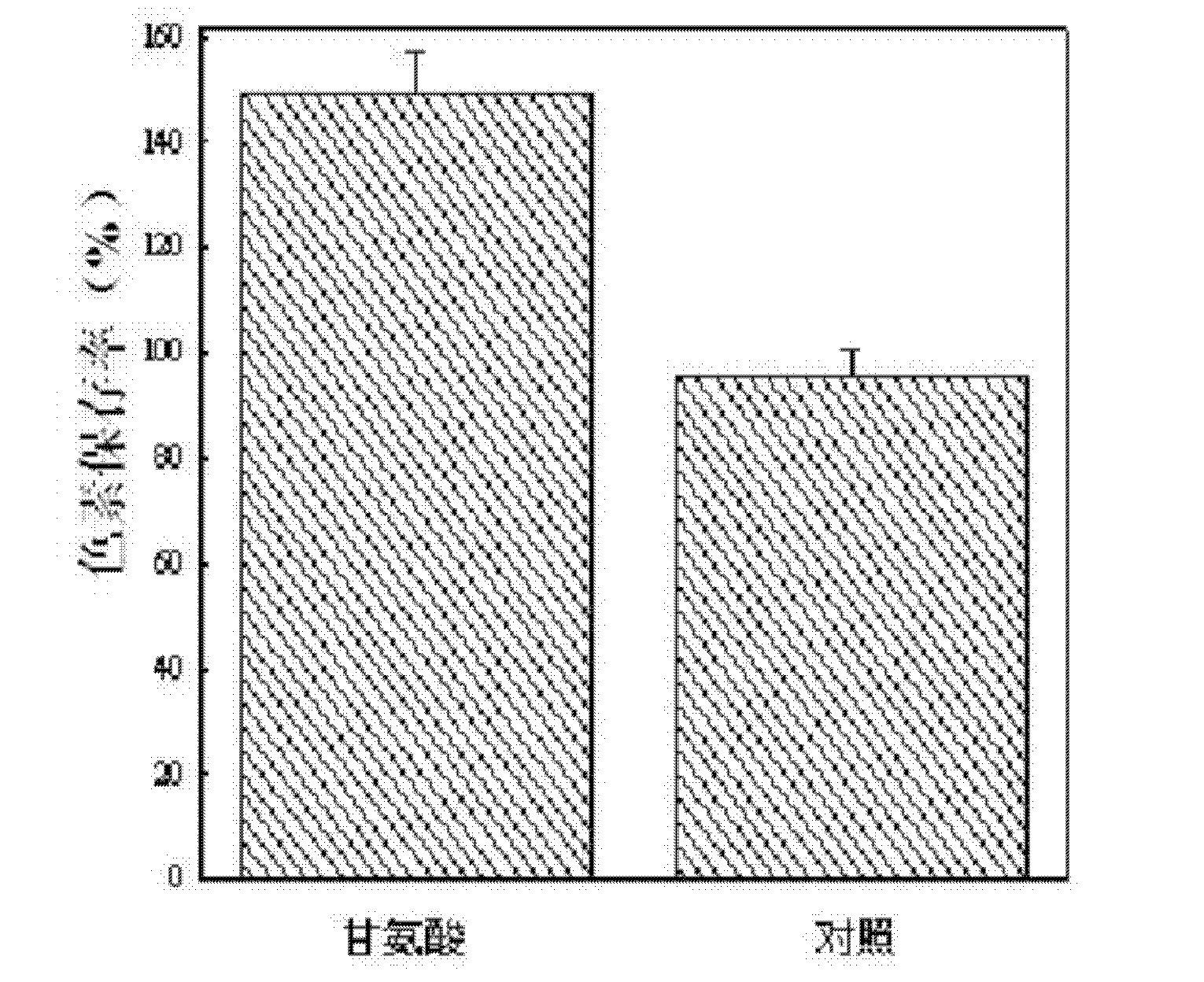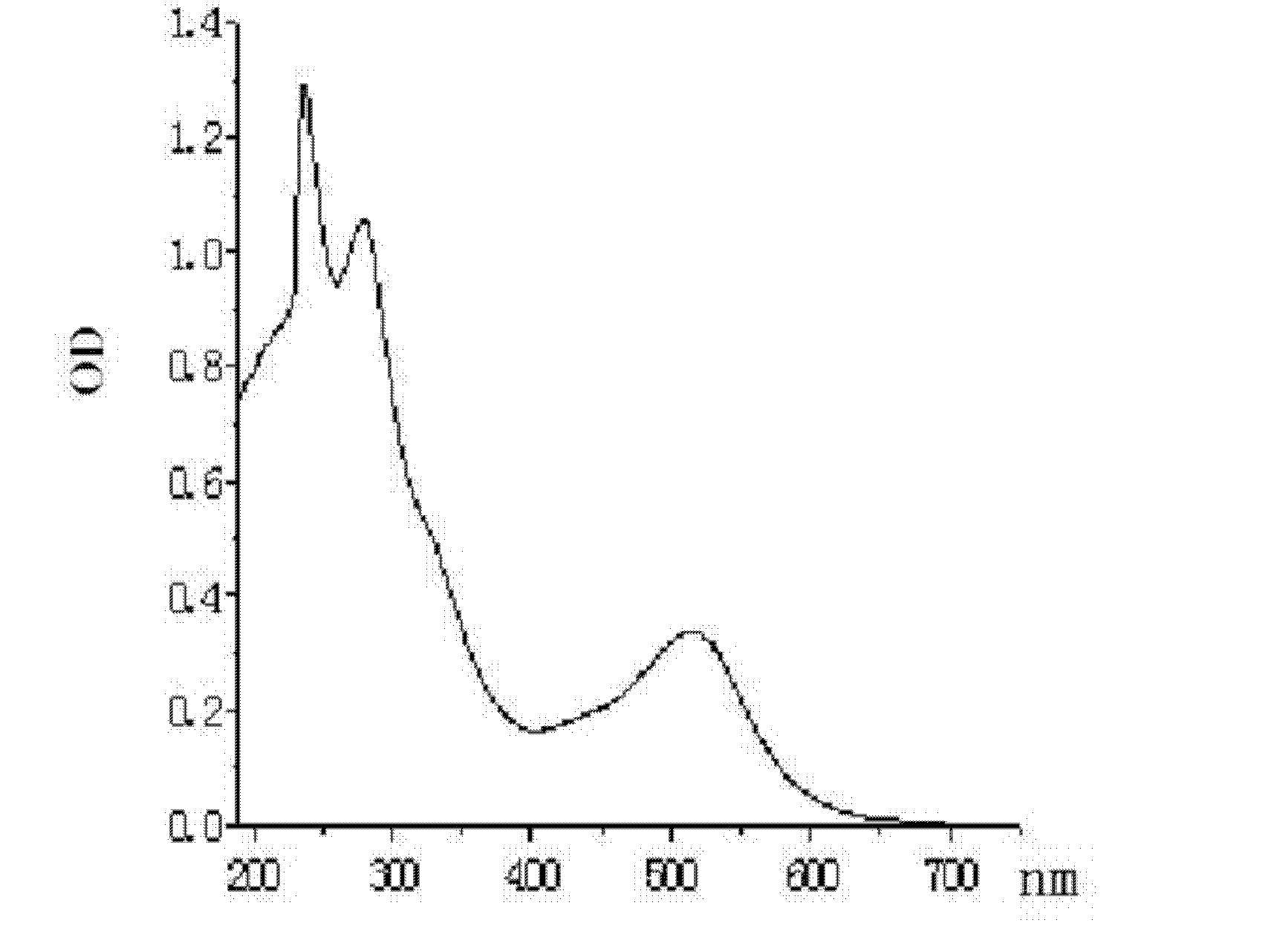Application of glycine as purple corncob anthocyanin pigment assistant agent
An anthocyanin and glycine technology, applied in the field of chemistry, can solve problems such as instability, easy degradation, and color reduction, and achieve the effects of reducing influence, improving preservation rate, and improving thermal stability
- Summary
- Abstract
- Description
- Claims
- Application Information
AI Technical Summary
Problems solved by technology
Method used
Image
Examples
Embodiment 1
[0019] Embodiment 1, the preparation of purple corncob anthocyanin pigment solution
[0020] Weigh 3.0 g of purple corn cob powder that has passed through an 80 mesh sieve, add 200 mL of a mixed solution made of 0.1 mol / L HCl and 95% ethanol at a volume ratio of 1:1, and set the temperature at 23-27 ° C , Shake extraction in a constant temperature oscillator with a vibration speed of 140-160r / min, repeat the extraction 3 times, each time for 12 hours, filter, combine the filtrates, and depressurize at a temperature of 66±2°C and a speed of 120r / min Rotary distillation to remove ethanol and most of the water to obtain a crude extract, then pass through the AB-8 resin column for purification, collect the target eluate, concentrate under reduced pressure to an appropriate volume, and obtain the purple corn cob anthocyanin pigment solution .
Embodiment 2
[0021] Embodiment 2, the influence of glycine on the stability of purple corncob anthocyanin pigments
[0022] Take respectively 0.5mL and 1.5mL of the purple corncob anthocyanin pigment solution prepared in Example 1, add 0.08mol / L glycine, coumarin, malonic acid, 1mL each of DL-malic acid solution respectively, and then respectively Dilute the volume to 10 mL with citric acid-disodium hydrogen phosphate buffer solution with pH 3.0 and pH 5.0, and prepare anthocyanin pigment concentrations of 1.36 μg / mL and 4.08 μg / mL, and auxochrome concentrations of 8 mmol / L , pH 3.0 and 5.0 co-coloring agent-purple corn cob anthocyanin pigment solution. In addition, the purple corncob anthocyanin pigment solution without co-colorant was set as a blank control. Place the above solutions at a temperature of 25°C for 10 days, measure the absorbance at a wavelength of 515nm every 24 hours, and calculate the pigment preservation rate. The calculation formula is:
[0023]
[0024] Where: ΔA...
Embodiment 3
[0029] Embodiment 3, the effect of glycine on the thermal stability of purple corn cob anthocyanin pigments
[0030] According to the method of Example 2, the anthocyanin pigment concentration was 1.36 μg / mL and 4.08 μg / mL respectively, the cocolorant-purple corncob anthocyanin pigment solution with a cocolorant concentration of 8 mmol / L and a pH of 5.0 . In addition, the purple corncob anthocyanin pigment solution without co-colorant was set as a blank control. Heat each of the above solutions in a water bath with a temperature of 50, 60, 70, 80, and 90°C, measure the absorbance at a wavelength of 515nm every 30 minutes, and calculate the purple corn cob anthocyanin pigment according to the Arrhenius formula. Thermal degradation kinetic parameters, the calculation formula is:
[0031] ln A A 0 = - kt t 1 / ...
PUM
 Login to View More
Login to View More Abstract
Description
Claims
Application Information
 Login to View More
Login to View More - Generate Ideas
- Intellectual Property
- Life Sciences
- Materials
- Tech Scout
- Unparalleled Data Quality
- Higher Quality Content
- 60% Fewer Hallucinations
Browse by: Latest US Patents, China's latest patents, Technical Efficacy Thesaurus, Application Domain, Technology Topic, Popular Technical Reports.
© 2025 PatSnap. All rights reserved.Legal|Privacy policy|Modern Slavery Act Transparency Statement|Sitemap|About US| Contact US: help@patsnap.com



